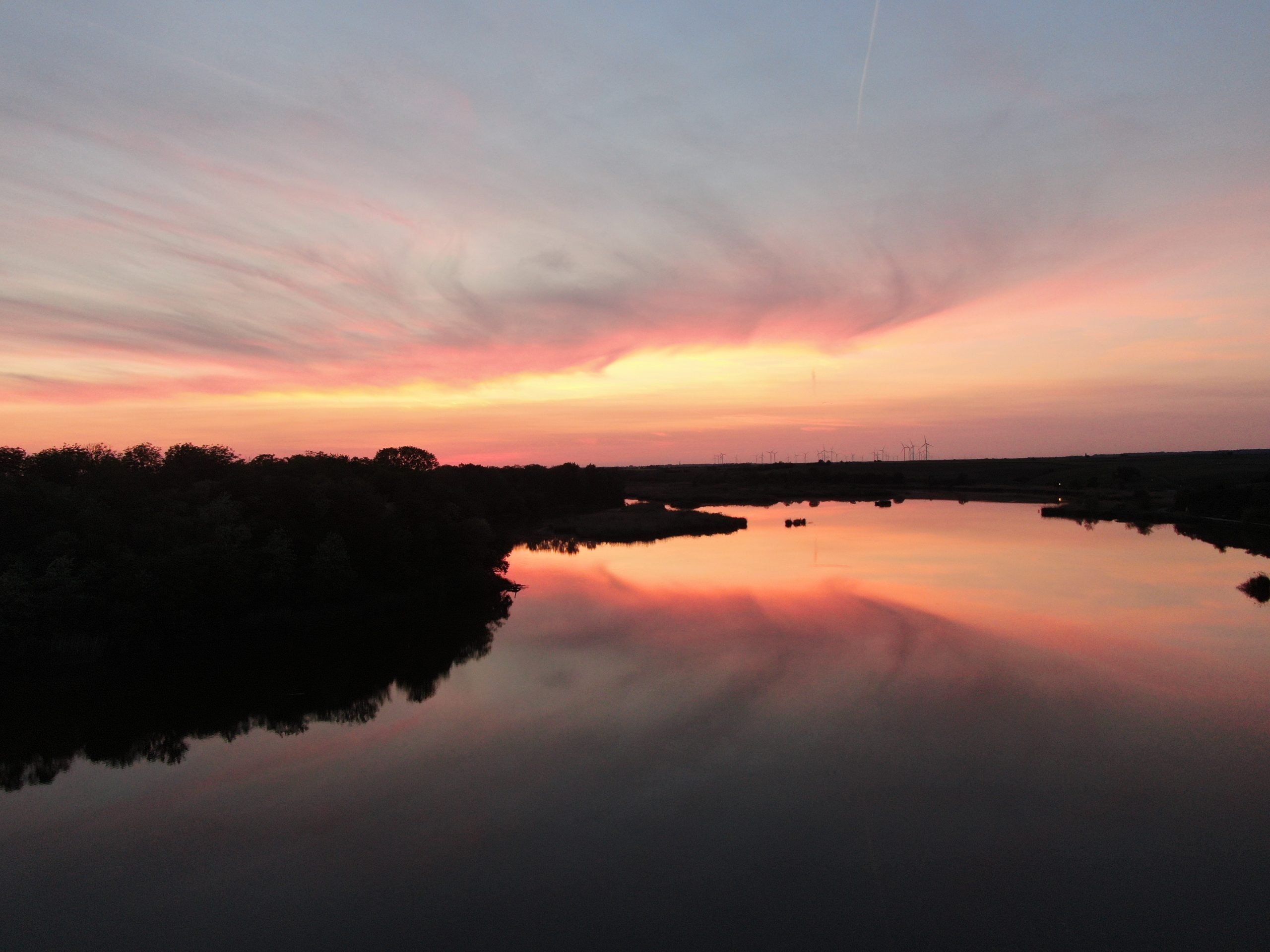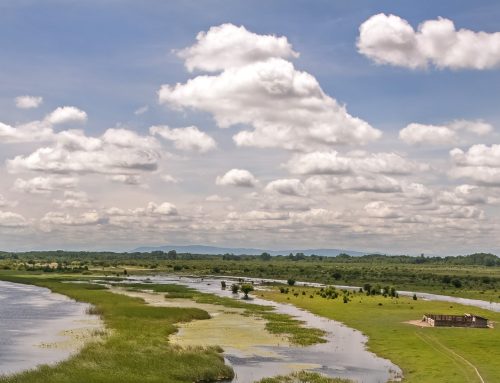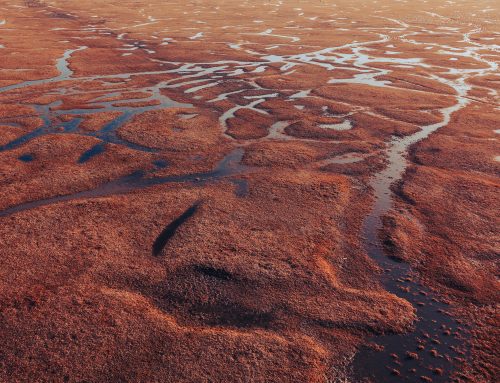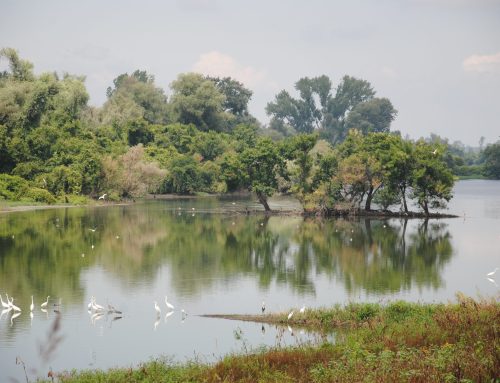Ecotourism is becoming an increasingly important part of Serbia’s tourism catalogue, especially in protected areas that attract tens of thousands of visitors every year. One example of a successful balance between ecotourism and nature conservation is the Zasavica Special Nature Reserve, which is visited by over 40,000 people every year. Through responsible management and controlled tourist activities that do not jeopardise nature, such as bird watching and educational tours, Zasavica allows its visitors to feel connected to nature, and part of the income from tourism is reinvested in the preservation of ecosystems and the development of local communities.
Another area that attracts the attention of nature lovers and has the potential to develop sustainable tourism is the Kraljevac Special Nature Reserve. It is an area of outstanding ecological importance that encompasses various aquatic and terrestrial ecosystems and is located in the southeast of the Panonian Basin on the edge of the Deliblato Sands. It covers 264 hectares and includes Lake Kraljevac, swamps, pastures and forests, and it is home to over 70 bird species, 26 fish species and many protected plant and animal species. The water of Lake Kraljevac comes from groundwater streams that extend from the Deliblato Sands to neighbouring Romania, and it has 12 springs.
| The area of Kraljevac used to consist of three smaller lakes, and the current body of water was created when the dam was built. However, what makes Kraljevac unique are its floating islands, which are a rare phenomenon in this part of Europe, and the remains of lowland peatlands, which are among the most endangered habitats in the world. These floating islands are constantly changing position under the influence of wind and hydrodynamic processes. One of the larger islands, which is over two hectares in size, is slowly approaching the dam, which could lead to serious environmental and technical difficulties. These movements could potentially damage the dam or destabilise the island itself, which could endanger the habitat of rare plant and animal species. |
“With its floating islands and reed beds, Lake Kraljevac is an important habitat for the nesting sites of strictly protected bird species in Europe, including the purple heron, squacco heron, little bittern, black-crowned night heron, western marsh harrier, auk, white-bearded tern, black tern and pygmy cormorant. The auk is on the global Red List of endangered species. Bee-eaters nest in the forests around the lake, and the neighbouring meadows and coastline provide perfect conditions for their diet. Marsh fern and marsh spurge are relict species that further enrich the biodiversity of this special reserve,” says Aleksandar Sarmeš, managing director of Kraljevac.
Wetlands such as Kraljevac are important ecosystems for the preservation of biodiversity. They help to regulate watercourses, store carbon and maintain stable populations of rare species. However, their conservation faces numerous challenges, including the impact of climate change, the spread of invasive species and changes in land use. The problem facing this particular special nature reserve is the decline of extensive livestock farming. This served to maintain the environmental balance of the pasture. A solution is in the works through the programme to revitalise the Spasovina pasture, which is itself a habitat for many endangered plants and animals. The plan is to procure around 30 sheep, electric shepherds and the necessary infrastructure to preserve 20 hectares of steppe habitat. Another challenge is the prevalence of invasive plant and animal species, which require the continuous implementation of control measures.
“The cooperation with the European Union and UNDP under the initiative EU for the Green Agenda in Serbia provides crucial support for the revitalisation of the pasture and the preservation of the ecosystem of the Kraljevac Special Nature Reserve. This programme not only allows us to bring back the livestock, but also draws attention to important activities such as the removal of invasive species and the cleaning of the lake. Together with UNDP, we are working on implementing sustainable solutions that will ensure a long-term environmental balance, while the support of the European Union provides us with important funds for the implementation of activities such as cleaning the lake and raising awareness among the local community,” explains Milica Živković, project officer.
The conservation of protected natural areas such as the Kraljevac Special Nature Reserve requires an integrated approach that combines science-based management of ecosystems, sustainable use of resources and the active involvement of local communities.
“The active participation of the local population plays the main role in the protection and sustainable development of the Kraljevac Special Nature Reserve. Through volunteer actions, the locals contribute to the preservation of the ecosystem by removing rubbish, mowing the grass on the pastures and removing the invasive plant species. At the same time, we educate the public about the importance of protecting this area through workshops, round table discussions and seminars for all stakeholders. In addition, we have established a Council of Beneficiaries with members from the municipal administration, public companies, civil society, agriculture and the private sector, which allows us to make joint decisions based on the principle of sustainable management, and thus ensure the long-term protection of this unique ecosystem,” adds Sarmeš.
The staff of the Kraljevac Special Nature Reserve say that further development plans include the construction of a visitor centre and interactive educational trails, which will contribute to the development of ecotourism and secure an additional source of funding for the implementation of conservation measures. There are also plans to expand the reserve from 261 to 677 hectares, which will allow for better protection of biodiversity.
“Funding for staff, security, monitoring, research, and procurement of equipment and supplies is critical to the efficient management of the reserve. To achieve these goals, we need the support of the state, international organisations and donors,” Živanović concludes.
Global biodiversity conservation initiatives such as the Ramsar Convention confirm that only continuous monitoring, adaptive management and education can ensure the long-term stability of such ecosystems.
This text was produced as part of the campaign for the conservation of wetlands in Serbia “It’s not just a pond”, implemented with the financial support of Sweden, represented by the Swedish International Development Cooperation Agency (Sida), within the “EU for Green Agenda in Serbia” project. This project is implemented with the technical and financial support of the European Union and in partnership with the Ministry of Environmental Protection by the United Nations Development Programme (UNDP), in cooperation with Sweden and the European Investment Bank (EIB), with additional funding provided by the governments of Sweden, Switzerland and Serbia.




